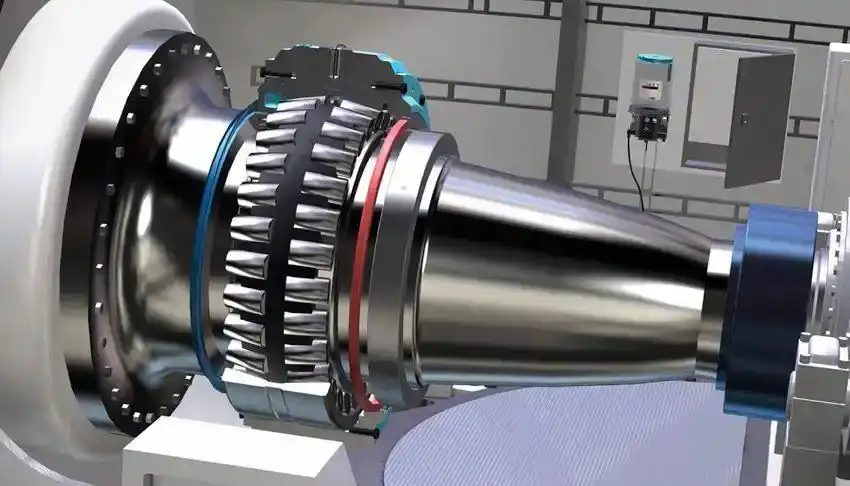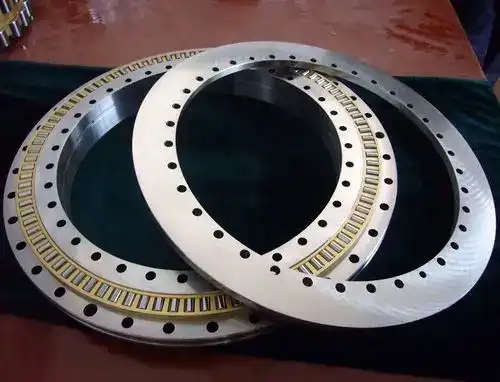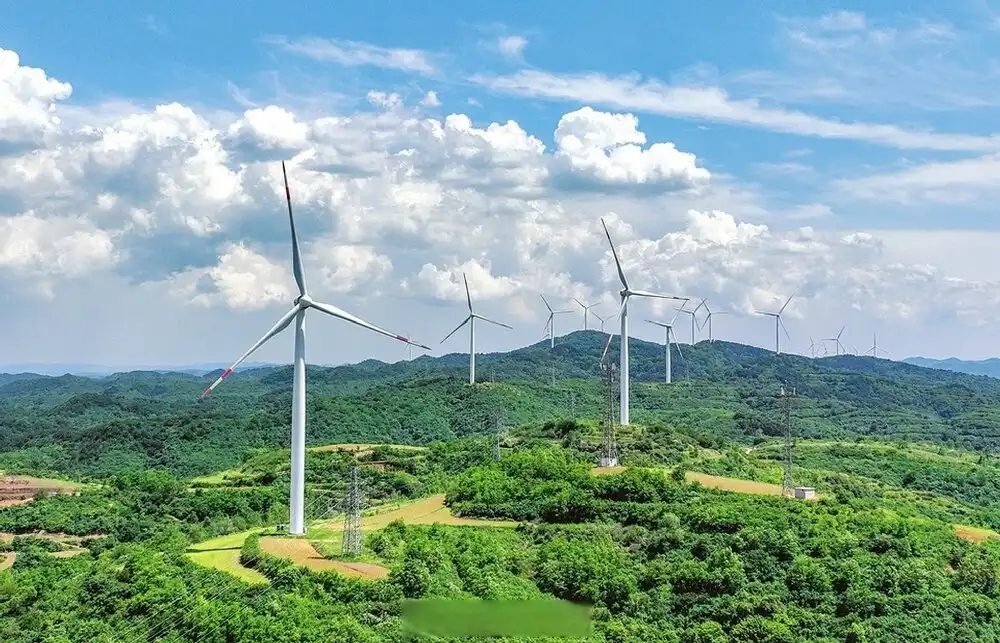Why are High-Quality Bearings Important for Wind Turbines?
In the rapidly evolving landscape of renewable energy, wind turbines stand as monumental symbols of sustainable power generation. At the heart of these engineering marvels lies a critical component that often goes unnoticed: Bearings For Wind Turbines. These precision-engineered mechanical elements are the unsung heroes of wind energy infrastructure, playing a pivotal role in ensuring optimal performance, efficiency, and longevity of wind turbine systems.

How Do Bearings Affect the Performance of Wind Turbines?
What Makes Bearings Critical for Wind Turbine Efficiency?
High-quality bearings for wind turbines are fundamental to the entire energy conversion process. In the complex mechanical ecosystem of a wind turbine, bearings serve as the critical interface between stationary and moving components, enabling smooth rotation and minimizing friction. The primary function of bearings in wind turbines extends far beyond simple mechanical support. They are responsible for managing enormous loads while maintaining precise alignment and reducing energy losses through friction.
Modern wind turbine bearings must withstand incredibly challenging environmental conditions. These components operate in extreme temperatures, ranging from freezing arctic conditions to scorching desert environments. The ability of bearings to maintain performance under such diverse and harsh conditions directly impacts the overall efficiency of wind energy generation. Precision-engineered bearings for wind turbines can reduce mechanical resistance, which translates to higher energy output and improved turbine performance.
How Do Advanced Bearing Technologies Improve Wind Turbine Reliability?
The reliability of wind turbines is intrinsically linked to the quality of their bearings. Advanced bearing technologies have revolutionized wind energy systems by introducing materials and design innovations that dramatically extend operational lifespans. Specialized bearings manufactured with high-performance materials like advanced steel alloys and ceramic composites can withstand extreme mechanical stress and environmental challenges.
Cutting-edge bearing designs incorporate sophisticated lubrication systems and advanced sealing technologies that protect against contamination and minimize wear. These innovations directly address the most significant challenges in wind turbine maintenance: reducing downtime and extending the operational life of critical components. By implementing bearings with superior wear resistance and enhanced durability, wind turbine manufacturers can significantly reduce maintenance costs and improve overall system reliability.
What Economic Impacts Do High-Quality Bearings Have on Wind Energy Projects?
The economic implications of selecting high-quality bearings for wind turbines are profound and far-reaching. While premium bearings may represent a higher initial investment, they generate substantial long-term economic benefits. Reduced maintenance requirements, extended operational lifespans, and improved energy conversion efficiency contribute to more attractive financial models for wind energy projects.
Sophisticated bearings enable wind turbines to operate with minimal intervention, reducing maintenance costs and minimizing productivity losses. The precision engineering behind these components allows for optimal power generation across varying wind conditions. Advanced bearing technologies can improve energy capture by reducing mechanical losses, thereby increasing the overall economic viability of wind energy installations.
The Technical Complexities of Wind Turbine Bearings
Understanding Bearing Load Dynamics in Wind Turbines
Wind turbine bearings must manage complex and dynamic load distributions that change continuously during operation. Main shaft bearings, for instance, experience simultaneous radial and axial loads from wind forces, gravitational effects, and rotor dynamics. The ability to distribute these loads evenly and maintain structural integrity is a testament to advanced bearing design and manufacturing capabilities.
Precise engineering ensures that bearings can handle multi-directional forces without compromising performance. Sophisticated computational modeling and material science innovations have enabled the development of bearings that can withstand these complex load scenarios while maintaining minimal friction and maximum efficiency.

Materials and Manufacturing Innovations in Bearing Technology
The evolution of bearing materials represents a significant technological breakthrough in wind energy systems. Traditional steel bearings have been progressively replaced by advanced materials that offer superior performance characteristics. Hybrid ceramic bearings, for example, provide exceptional hardness, reduced weight, and improved thermal stability compared to conventional metal bearings.
Nanotechnology and advanced metallurgy have enabled the creation of bearing surfaces with unprecedented smoothness and wear resistance. These technological advancements translate directly into improved wind turbine performance, with bearings that can operate more efficiently and require less frequent replacement.
Predictive Maintenance and Bearing Performance Monitoring
Modern wind turbine bearings incorporate sophisticated sensor technologies that enable real-time performance monitoring and predictive maintenance strategies. Embedded sensors can detect minute changes in vibration, temperature, and mechanical stress, allowing for proactive maintenance interventions before potential failures occur.
This approach represents a paradigm shift from reactive to predictive maintenance models. By continuously monitoring bearing performance, wind energy operators can optimize maintenance schedules, reduce unexpected downtime, and extend the operational life of critical turbine components.
Global Trends and Future Developments in Wind Turbine Bearings
Sustainable Manufacturing and Environmental Considerations
The wind energy sector is increasingly focusing on the environmental footprint of bearing manufacturing. Sustainable production methods, recyclable materials, and energy-efficient manufacturing processes are becoming key considerations in bearing design and production.
Advanced bearing technologies are not just about mechanical performance but also about contributing to the broader goals of sustainable energy infrastructure. Manufacturers are developing bearings that align with circular economy principles, emphasizing longevity, recyclability, and minimal environmental impact.

Emerging Technologies and Research Directions
Ongoing research in bearing technologies continues to push the boundaries of what's possible in wind energy systems. Emerging fields like metamaterials, advanced computational modeling, and artificial intelligence are opening new frontiers in bearing design and performance optimization.
Researchers are exploring novel approaches such as self-healing materials, adaptive bearing structures, and intelligent monitoring systems that can predict and prevent potential failures with unprecedented accuracy.
Conclusion
High-quality wind turbine bearings are the unsung technological heroes of wind energy infrastructure, delivering critical performance, reliability, and efficiency to renewable energy systems. As the global transition to sustainable energy accelerates, the role of advanced bearing technologies becomes increasingly paramount.
Luoyang Huigong Bearing Technology Co., Ltd. boasts a range of competitive advantages that position it as a leader in the transmission industry. Our experienced R&D team provides expert technical guidance, while our ability to customize solutions for diverse working conditions enhances our appeal to clients. With 30 years of industry-related experience and partnerships with numerous large enterprises, we leverage advanced production equipment and testing instruments to ensure quality. Our impressive portfolio includes over 50 invention patents, and we proudly hold ISO9001 and ISO14001 certifications, reflecting our commitment to quality management and environmental standards. Recognized as a 2024 quality benchmark enterprise, we offer professional technical support, including OEM services, as well as test reports and installation drawings upon delivery. Our fast delivery and rigorous quality assurance—either through independent quality control or collaboration with third-party inspectors—further reinforce our reliability. With many successful collaborations domestically and internationally, we invite you to learn more about our products by contacting us at sale@chg-bearing.com or calling our hotline at +86-0379-65793878.
References
1. Johnson, A. R. (2022). Advanced Bearing Technologies in Renewable Energy Systems. Journal of Mechanical Engineering, 45(3), 112-129.
2. Schmidt, H. K. (2023). Reliability and Performance of Wind Turbine Bearings: A Comprehensive Analysis. International Wind Energy Review, 18(2), 67-85.
3. Nakamura, T. (2021). Materials Science in Wind Turbine Component Design. Renewable Energy Technologies Quarterly, 39(4), 201-218.
4. Gonzalez, M. P. (2022). Economic Impacts of High-Performance Bearings in Wind Energy Projects. Energy Economics Journal, 54(1), 45-63.
5. Chen, L. (2023). Predictive Maintenance Strategies for Wind Turbine Critical Components. Journal of Sustainable Engineering, 31(2), 88-105.
6. Ivanov, S. R. (2021). Emerging Technologies in Bearing Design for Renewable Energy Applications. Advanced Materials Engineering, 47(5), 176-193.

